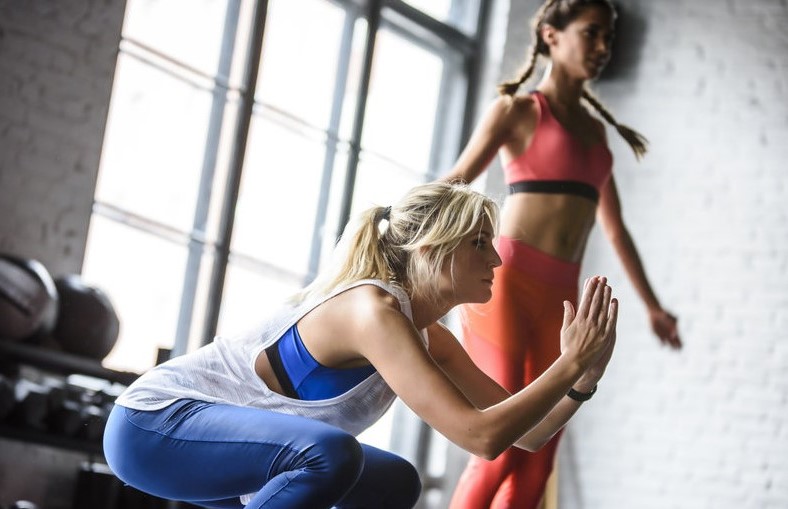Discover the secrets to achieving the booty of your dreams with our comprehensive guide on squats. Learn about different squat variations, proper form, and the benefits of squats for sculpting your glutes. If you've been dreaming of having a firm and toned booty, look no further! Squats are one of the most effective and versatile exercises for sculpting and strengthening your glutes.
Whether you're a fitness enthusiast or a beginner, incorporating squats into your workout routine can help you achieve the derrière of your dreams. In this article, we will demystify the world of squats, covering everything from proper form to variations and their benefits. Let's get started on the journey to your dream booty!
Get the Booty of Your Dreams: Squats Demystified
Squats are a compound exercise that primarily targets the glutes, hamstrings, and quadriceps while also engaging the core and lower back muscles. They are a fundamental movement pattern and an essential part of any lower body workout routine. Let's delve into the specifics of how squats can help you attain the perfect booty you desire:
The Science behind Squats
Before we dive into the various types of squats, it's essential to understand the science behind this powerhouse exercise. Squats work by activating the gluteus maximus, the largest muscle in the buttocks. When you perform a squat, your glutes contract, leading to muscle growth and toning over time.
The LSI keyword here is "glute activation." To maximize glute activation during squats, focus on pushing through your heels, engaging your core, and maintaining proper form throughout the movement.
Proper Form for Squats
Mastering the correct form is crucial for the effectiveness and safety of squats. Here's a step-by-step guide to performing squats with impeccable form:
Feet Placement: Stand with your feet shoulder-width apart, toes pointing slightly outward.
Hip Hinge: Initiate the squat by pushing your hips back, as if you're sitting on an imaginary chair.
Knee Bend: As you hinge your hips, bend your knees, ensuring they track in line with your toes.
Depth: Lower yourself until your thighs are parallel to the ground, or you reach a comfortable depth.
Neutral Spine: Keep your back straight, chest lifted, and core engaged throughout the movement.
Rise: Push through your heels and return to the starting position, squeezing your glutes at the top.
Variations of Squats
To keep your squat routine engaging and challenging, incorporating various squat variations can be highly beneficial. Let's explore some exciting LSI keyword-backed squat variations:
Goblet Squats: Hold a dumbbell or kettlebell close to your chest as you perform the squat, emphasizing form and control.
Sumo Squats: Take a wide stance with your toes pointing outward, targeting your inner thighs and glutes.
Pistol Squats: Elevate one foot off the ground and perform a squat using only one leg, enhancing balance and strength.
Jump Squats: Add plyometrics to your squats by exploding into a jump at the top of the movement, boosting power and calorie burn.
Benefits of Squats
Squats offer a myriad of benefits beyond just sculpting your dream booty. Here are some additional advantages of incorporating squats into your fitness routine:
Full-Body Workout: While squats primarily target the lower body, they also engage the core, back, and upper body for overall strength development.
Improved Posture: Strengthening your core and lower back through squats can lead to improved posture and reduced risk of lower back pain.
Functional Movement: Squats mimic everyday movements like sitting and standing, enhancing your ability to perform daily activities with ease.
Increased Flexibility: Regular squatting can improve hip and ankle flexibility, crucial for injury prevention and athletic performance.
FAQs
Let's address some common questions related to squats and booty building:
Are squats the best exercise for glutes?
Yes, squats are among the most effective exercises for targeting and strengthening the glutes. They activate the gluteus maximus, helping to build muscle and shape your booty.
Can squats help me lose weight?
While squats burn calories, weight loss primarily depends on creating a caloric deficit through a balanced diet and regular exercise. Incorporating squats into your routine can contribute to overall weight loss.
How many squats should I do per day?
The number of squats you should perform per day depends on your fitness level and goals. For beginners, starting with 2-3 sets of 10-15 reps is a good approach, gradually increasing as you progress.
Can I do squats if I have knee pain?
If you experience knee pain, it's essential to consult a healthcare professional before performing squats. They may recommend modifications or alternative exercises to protect your knees.
Is it normal to feel sore after squats?
Yes, feeling sore after squats is normal, especially if you're new to the exercise or have increased the intensity. It's a sign that your muscles are adapting and getting stronger.
Can I do squats without weights?
Absolutely! Bodyweight squats are an excellent starting point, especially for beginners. Mastering the form without weights is crucial before adding external resistance.
Conclusion
Get ready to achieve the booty of your dreams with the power of squats. By incorporating squats into your workout routine and focusing on proper form and variations, you'll be well on your way to sculpting strong and shapely glutes. Remember, consistency and dedication are key to seeing results. Now, go ahead and squat your way to a more confident you!




0 Comments:
Post a Comment